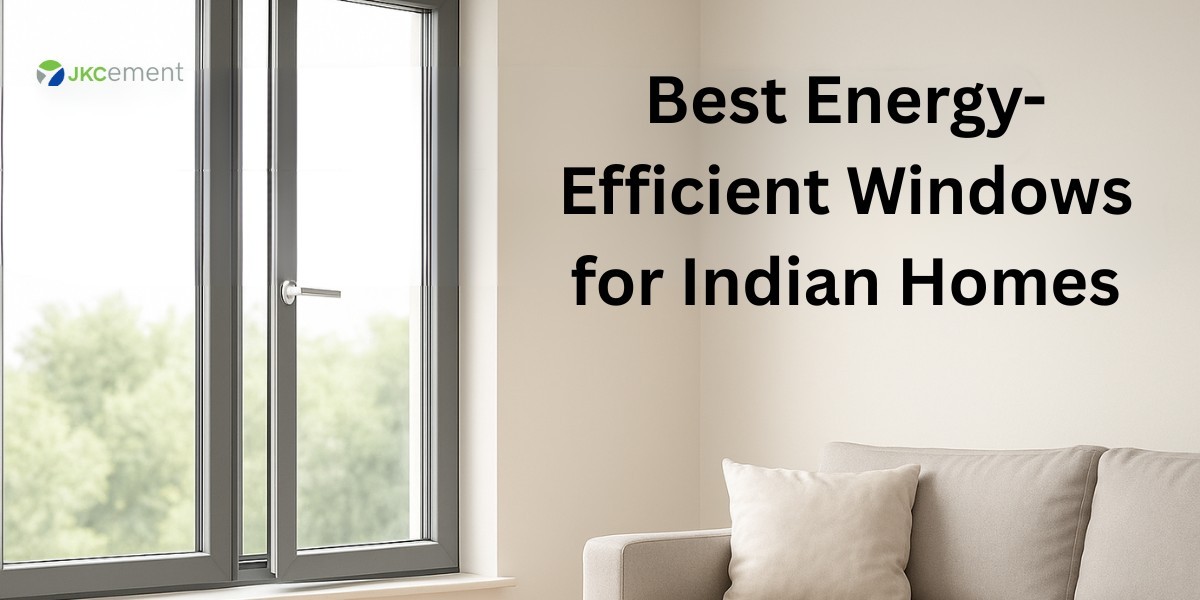In India, Where Every Season Hits Hard, Your Windows Should Work Smarter
From the dry heat in Rajasthan to coastal humidity in Kerala, the Indian climate isn’t easy on homes — especially when it comes to heat, dust, moisture, and energy use.
Yet, we often forget that windows aren’t just for views and light. When chosen wisely, they can cut cooling costs, improve airflow, and create thermal comfort inside your home — naturally.
Let’s dive into the most energy-efficient window designs for different parts of India, and understand how the right types of windows can shape not just the design but also the performance of your home.
Why Window Design Matters More Than You Think
Here’s the thing — over 30% of a home’s energy loss or gain happens through windows. So, in a country like ours, where ACs or fans are always on, choosing the right window isn't just about aesthetics — it’s about comfort and cost-saving.
“I used to think bigger windows meant better homes,” says Shruti, a homeowner in Pune. “Until my living room turned into a furnace every April. After replacing them with double-glazed sliding windows, my power bill dropped.”
Best Energy-Efficient Types of Windows for Indian Homes
1. Casement Windows (With Inward or Outward Opening)
These are hinged on one side and can open fully, allowing maximum airflow, especially in humid zones like Kolkata or Chennai.
Best for: Kitchens, bedrooms
Energy benefit: Strong sealing when closed, reduces hot air entry
2. Sliding Windows
Perfect for urban homes with limited space. They glide horizontally and are usually paired with large glass panes.
Best for: Living rooms, balconies
Energy benefit: Works well with tinted or Low-E glass to block UV rays in hot cities like Delhi or Ahmedabad
3. Louvered Windows (with Adjustable Slats)
Ideal for controlled ventilation in places like bathrooms or utility spaces.
Best for: Utility rooms, wash areas
Energy benefit: Keeps airflow continuous without needing a fan, especially in coastal homes
4. Bay and Bow Windows
These extend outward and add architectural character, but with the right glass, they can also enhance light and insulation.
Best for: Drawing rooms, reading nooks
Energy benefit: Natural daylight reduces dependency on artificial lighting
5. Skylight Windows
Great for daylighting — especially in single-story homes or duplexes.
Best for: Staircases, atriums
Energy benefit: Reduces the need for lights during the day; insulated versions prevent heat gain
6. Fixed or Picture Windows
They don’t open — but that’s what makes them airtight. Pair them with double-glazed units, and they’re excellent for temperature control.
Best for: High-rise buildings, noise-prone areas
Energy benefit: Airtight, cuts down external noise and thermal leakage
Material + Glass = Big Energy Difference
Don’t forget: the frame and glass you choose also make a massive difference.
| Frame Material | Thermal Efficiency | Good For |
|---|---|---|
| uPVC | Excellent | All climates |
| Aluminium (Thermally Broken) | Good | Coastal homes |
| Wood | Moderate | Cold/dry regions |
And for glass?
Double Glazing: Two layers of glass with air in between — insulates against heat & noise
Low-E Glass: Reflects infrared heat while allowing visible light
Tinted Glass: Cuts glare and heat
Tips to Make Any Window More Energy-Efficient
Use curtains or blinds in summer
Seal any gaps or cracks with weatherstrips
Place shading devices (awnings, overhangs) on west-facing windows
Choose white or light-coloured frames in hot zones to reflect heat
Human Moment Box
“Most people think about AC size before checking their windows. But a simple switch to energy-efficient windows can reduce your cooling load by 20-30%. It’s invisible savings.”
— Nishant, Civil Consultant, Jaipur
FAQs — Energy-Efficient Windows for Indian Homes
1. Which window type is most energy efficient for Indian homes?
Casement windows with double-glazed Low-E glass provide the best performance.
2. Is uPVC better than aluminium for windows?
uPVC is more insulating, but aluminium (with thermal break) is stronger and better for large panes.
3. Can skylights work in hot Indian cities?
Yes, if you use insulated skylight glass with proper shading.
4. Are sliding windows energy efficient?
They’re space-saving, but may not seal as tightly as casement ones. Use weatherproof gaskets for better efficiency.
5. Do tinted windows really reduce heat?
Yes. Tinted or reflective glass can significantly cut UV and infrared heat gain — ideal for west-facing windows.
Final Thought
Windows may seem like small details — but in India’s diverse and extreme climates, they make a big impact on comfort, energy bills, and design.
Whether you’re building new or upgrading an old flat, look beyond just glass size. Choose window types and materials that suit your climate and space — and trust in reliable construction partners like JK Cement for quality that supports it all.






